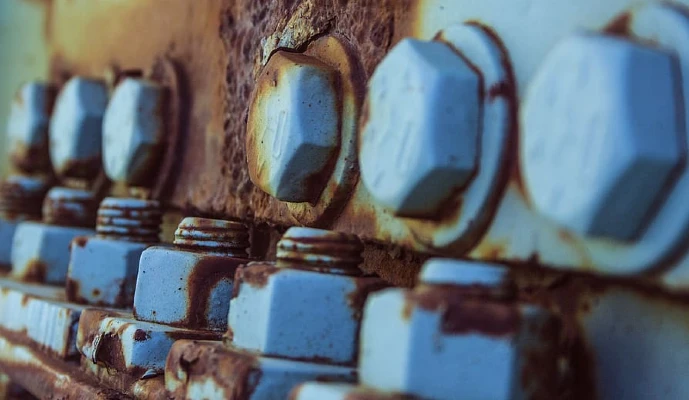Addressing the Problem of Bolt Failures

Engineers are sometimes confronted with the issue of bolt failures. Taking precautionary measures to prevent this from happening would be a wise decision on the part of those handling a project involving fasteners. It is no easy task to determine if a bolt is capable of withstanding the pressure applied onto it, but certain factors must be taken into consideration before the application begins. It is important to note that the strength and security of bolted connections are largely dependent on the functioning of a bolted joint.
Though far from a common occurrence, bolt failures do happen. Let’s explore the scope of the problem:
Excess stress on bolts
Overstressing is perhaps the most common cause for bolt failures, and the easiest to determine as well. The longevity of your bolts, in their functioning at full capacity, depends significantly on their bearing the right amount of stress without having to withstand an excess amount. There are three main forms of stress on bolts:
- Internal stress (also referred to as “preload”), which ensures bolted joints are kept in place
- External force of the joint material (also referred to as “service load”.)
- Static stress (commonly known as “tensile load”) pulling both ends of the bolt. An excess tensile on the bolt can lead to bolt breakage. To safeguard your project against such a situation arising, you need to ensure the bolts aren’t overturned or tightened more often than necessary. It is crucial that the tensile force does not exceed the tensile strength of the bolt.
Bolt Fatigue
Bolts seldom last you a lifetime, and they are prone to failure caused by fatigue. The efficiency of bolts diminishes over prolonged use. As is the case with excess stress, the application of internal and external forces are factors that determine the failure or strength of a bolt - they can be estimated roughly, according to the number of load-preload cycles the bolt is put through.
Bolts need to be replaced every couple of years, mainly due to fatigue. This is especially crucial when you are dealing with projects where stress levels are regularly high.
Bolt Corrosion
As bolts are exposed to substances that are incompatible like oxygen, metal products, and even naturally-blending chemicals, they are prone to the risk of corrosion. Bolts used to secure automobile components are in danger of being exposed to fluid and engine leaks, causing them to deteriorate over time. Corrosion also occurs in structural, construction, and mechanical applications.
Pre-applications specially designed for specific types of fasteners should be used in order to safeguard your application against corrosion. This is a fairly simple and economical method that also happens to be highly efficient.
Bolt Thread Issues
With the tightening of a bolt, as the pairing of two threads occurs, a certain amount of shear stress gets added to the threaded part of the bolt. Thread stripping is always a risk, where the section shears because of an excess amount of stress. To avoid joint failure arising from this phenomenon, you should assess the possibility and scope of damage well before using the bolt, and take measures to ensure that the threading is utilised accordingly.
Under-designing
In certain cases, the design of a bolt fails to take into consideration the possibility of excess force acting on the bo;t; i.e. there is a miscalculation of the amount of force acting on the bolt. For example, if a bolt is capable of handling one tonne of force, but its design is in such a way that 1.5 tonnes act on the fastener, the possibility of bolt failure is almost certain. It is imperative, therefore, that the design of a fastener takes into consideration the amount of force acting on a bolt.
Exposure to Hydrogen
Bolt metal can become brittle from being exposed to atomic hydrogen - this is a difficult challenge to overcome. However, a few preventive measures can be applied. Overstressing can be a link in a chain that eventually leads to embrittlement from hydrogen, and blisters can form on the fabric of the bolt as a result. Hence, you need to protect the bolt against excess stress being applied. If this aspect is not taken care of, the bolt will degrade much quicker than its estimated lifetime value suggests.
Fasteners should be replaced as soon as they experience excess stress, but there is also a more efficient alternative: ensure the atmosphere that the bolts are exposed to is free anodic chemicals and solvents that cause the problem of embrittlement.
Measures that can be taken to prevent bolt failures
- Assessing the design of the component or the structure upon which it is going to be used, thereby accurately calculating the amount of force that would be acting on the bolt.
- Assessing the environment where the bolt is going to be used, and applying the right coatings to avoid corrosion.
- Ensuring that proper heat treatment of the bolt is done.
- The fastener’s plating should be carefully designed to avoid hydrogen embrittlement.
- A designer should select the right thread design for the project; it is more preferable to choose a metric coarse thread fastener than a fine thread one, as the possibility of thread damage is significantly less.
ITA Fasteners brings you a wide range of bolts, along with its high-quality collection of fasteners, suited for many different kinds of applications. With our expertise and experience as thought-leaders in the world of fasteners, we carefully assess your requirement, and help you ensure that fasteners are utilised to their full capacity to secure your application. To know more, get in touch with us right away!







